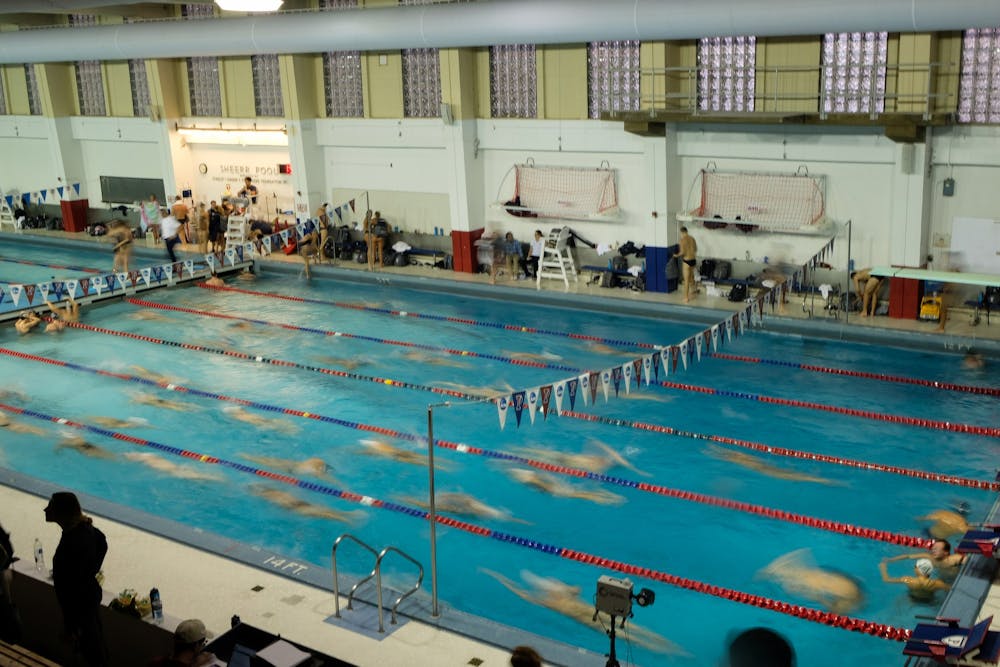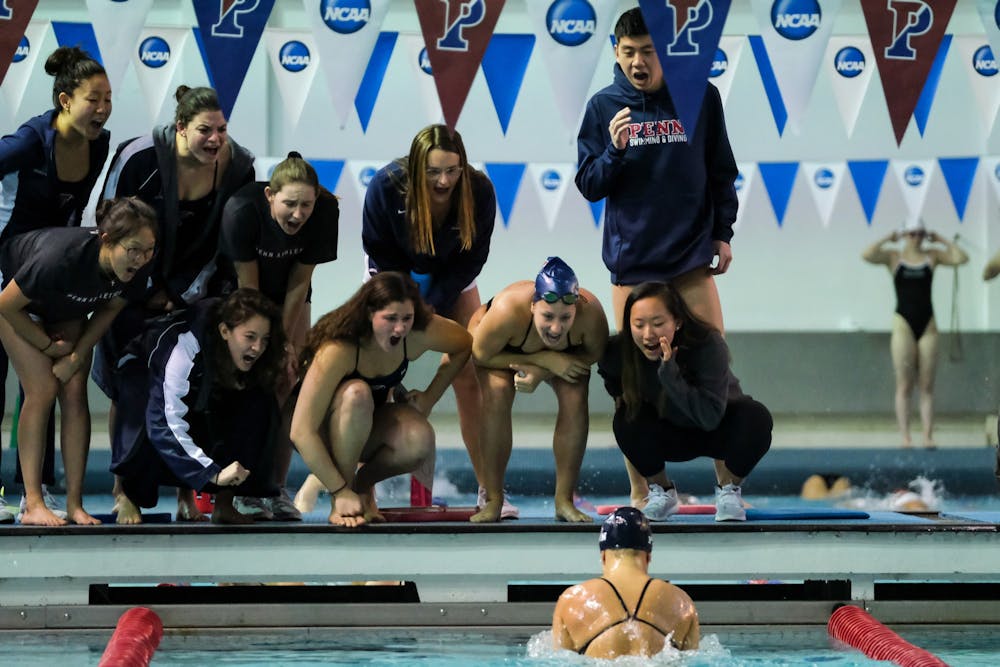
The 65 athletes of Penn men's and women's swimming enjoy the benefits of joint team practices and training sessions.
Credit: Son NguyenSixty-five athletes. Five coaches. Both men and women practicing together. This type of layout is unusual for Penn teams, but out of 33 varsity sports, swimming stands out as a combined program where both teams are integrated.
The men and women share the same coaching staff, train together, and often even swim together based on stroke.
“Personally, I’m used to it based on my club team, which was over 500 swimmers,” sophomore Will Kamps said. “But Penn was different in that it was a combined program. You don’t see a whole lot of swimming with the women all the time, but you still see some, and it’s cool to see how they motivate and feed off each other. It pays off later in the future at swim meets.”
Beginning this year, both the men and women lift together in the weight room with the same routines, a change that has furthered gender integration on the team. It has also translated into success at meets. The men’s team is coming off two straight wins against Villanova and Brown, and the women’s team had several first-place finishes at their last competition.
“It’s definitely a different environment than an all-female sport because you have people of all different levels and different genders,” sophomore Rachel Maizes said. “I think it really helps us to bond as a team and push each other because, ultimately, we do train and race in different ways. We took recruiting trips here our senior fall, and in that time I was able to see just how supportive everyone is of each other. I think that’s something you really get through a combined program.”

According to the athletes, they owe much of their success to their coaches.
“Mike [Schnur], our head coach, and two assistant coaches are able to split up the work and give each person individual attention when they need it,” Kamps said. “[Mike] has had success with both the men’s team and the women’s team, and that influenced my decision [to come here].”
“Having the same coaches is really nice,” Maizes said. “It’s nice to train with people who are faster than you and stronger than you, and it pushes you no matter what you’re doing. Having two separate sets of coaches doesn’t really allow for [support].”
Ultimately, the sheer size of the team pushes the athletes to perform the way they do. Every swimmer has their own niche, and according to the Quakers, that’s what brings everyone together.
“More people on the team is just more support and a better support system. It really opens a network for a bunch of different opportunities,” Maizes said. “You’ll have people interested in all different things studying a variety of things, and there always will be people who are interested in the same things as you."
“It definitely helps us bond as a team because there’s so many different interests among us. It helps us become more cohesive and supportive of each other.”
The Red and Blue's schedule continues on Nov. 23, as they make the short trip to Princeton, N.J. to take on the Tigers and Cornell. Hopefully for the athletes, the structure of the team will help them in the long run as they seek to overtake their Ivy League opponents this winter season.
The Daily Pennsylvanian is an independent, student-run newspaper. Please consider making a donation to support the coverage that shapes the University. Your generosity ensures a future of strong journalism at Penn.
Donate




